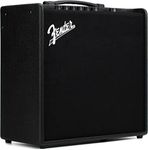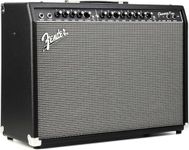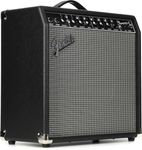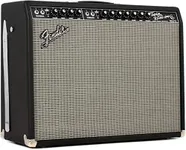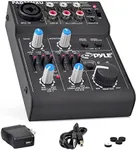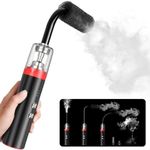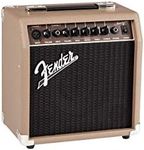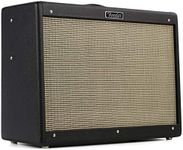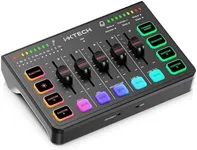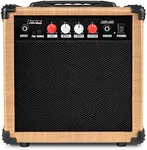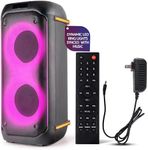We Use CookiesWe use cookies to enhance the security, performance,
functionality and for analytical and promotional activities. By continuing to browse this site you
are agreeing to our privacy policy
10 Best Fender Amps 2025 in the United States
From leading brands and best sellers available on the web.How do we rank products for you?
Our technology thoroughly searches through the online shopping world, reviewing hundreds of sites. We then process and analyze this information, updating in real-time to bring you the latest top-rated products. This way, you always get the best and most current options available.

Buying Guide for the Best Fender Amps
Choosing the right Fender amplifier can significantly enhance your music experience, whether you're a beginner or a seasoned musician. The right amp will complement your playing style, the type of music you play, and the venues where you perform. To make an informed decision, it's important to understand the key specifications and how they align with your needs.WattageWattage refers to the power output of the amplifier. It's important because it determines how loud the amp can get and how well it can handle different performance settings. Lower wattage amps (1-20 watts) are great for home practice and small gigs, as they provide good sound at lower volumes. Medium wattage amps (20-50 watts) are versatile for both practice and small to medium venues. High wattage amps (50+ watts) are ideal for large venues and outdoor performances, offering powerful sound and headroom. Choose wattage based on where you'll be playing most often.
Speaker SizeSpeaker size affects the tone and projection of the amplifier. Smaller speakers (8-10 inches) tend to produce a tighter, more focused sound, which is great for practice and recording. Medium speakers (12 inches) are the most common and offer a balanced tone suitable for various music styles and venues. Larger speakers (15 inches) provide a fuller, bass-heavy sound, ideal for genres like jazz and blues. Consider the type of music you play and the sound you prefer when selecting speaker size.
Tube vs. Solid-StateTube amplifiers use vacuum tubes to amplify sound, providing a warm, rich tone with natural distortion. They are favored by many professional musicians for their dynamic response and tonal quality. Solid-state amplifiers use transistors and are generally more reliable, lighter, and less expensive. They offer clean, consistent sound and are great for beginners or those who need a durable amp for frequent transport. Decide based on your preference for tone quality and maintenance requirements.
ChannelsChannels refer to the different sound settings available on the amplifier. Single-channel amps offer one consistent sound, which is great for simplicity and ease of use. Multi-channel amps provide multiple sound options, such as clean, overdrive, and distortion, allowing for greater versatility in your playing. If you play a variety of music styles or need different tones for different songs, a multi-channel amp might be the best choice.
EffectsMany Fender amps come with built-in effects like reverb, delay, and chorus. These effects can enhance your sound without the need for additional pedals. If you enjoy experimenting with different sounds and textures, an amp with built-in effects can be very convenient. However, if you prefer using external pedals or have a specific effects setup, you might prioritize other features over built-in effects.
PortabilityPortability is important if you plan to move your amp frequently, whether for gigs, rehearsals, or practice sessions. Smaller, lighter amps are easier to transport and set up, making them ideal for musicians on the go. Larger amps may offer better sound quality and volume but can be cumbersome to move. Consider your transportation needs and how often you'll be moving the amp when making your choice.
FAQ
Most Popular Categories Right Now
